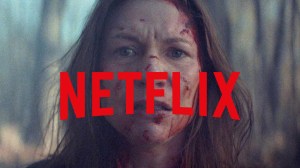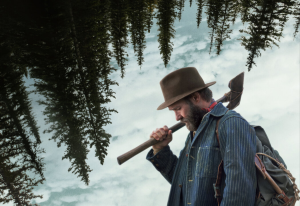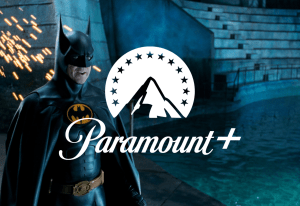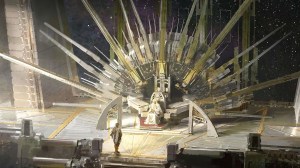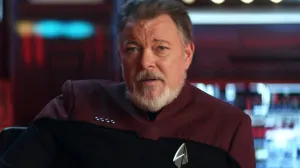The 1990s marked a pivotal time for cinema, as boundary-pushing visual effects were making it possible to tell stories in more believable ways than the CGI available in previous years, though the thrilling impact of practical effects allowed for a compelling mixture of cinematic sensibilities. Director Jan de Bont tapped into those storytelling techniques to bring Twister to life, which also saw him recruit a charming ensemble of performers and the growing interest in storm chasing to deliver audiences a spectacular blockbuster. An all-new 4K Ultra HD release of Twister is set to hit shelves on July 9th.
Videos by ComicBook.com
The movie is described, “Don’t breathe! Don’t look back! Just run for your life when a destructive force of nature comes howling straight toward you, destroying everything in its path — when you’re running from a Twister. Academy Award winner Helen Hunt stars as Dr. Jo Thornton-Harding, who as a small girl watched her father sucked to his death from her family’s storm cellar by a massive tornado. Now a storm chaser, a scientist who risks her life to study the dark side of nature by taking her data-transmitting instruments directly into the path of a deadly storm, Jo chases the largest tornado ever to strike Oklahoma as her marriage implodes and rival scientists will stop at nothing to steal her breakthrough.”
The film also starred Bill Paxton, Cary Elwes, Jami Gertz, Philip Seymour Hoffman, and Alan Ruck.
ComicBook caught up with de Bont to talk about bringing the film together, embracing the effectiveness of CGI, his thoughts on a sequel, and more.

ComicBook: I think one of the especially impressive things, in the years since the movie’s release, is just how talented the cast was and how everybody gels so well. You see someone like Philip Seymour Hoffman in one of his earlier roles. Did you know that, when you were on set, that even if some of these folks are unknowns, this was really going to kick off their careers? Or is that just magic that you didn’t particularly prepare for?
Jan de Bont: You never know that in advance completely, but that’s what you hope to achieve. I think what I really was looking for is for actors that look like real people, that behave like real people, and would be able to have a really great connection as a team. It was really important that they really would get along, and that quick-witted banter, what I really wanted to achieve is that it becomes normal to them, that they wanted that, that they used that lingo, “twister,” and a lot of other funny words that they made up themselves, and that made it so great.
Basically, all the actors were really, really connected. Maybe they got connected because we were in the middle of nowhere, absolutely nowhere. No five-star hotels, no four-star, no restaurant, nothing but muddy fields and small motels spread over a 40-mile area. So many stayed on the set, and that’s why they bonded. They really did funny things. They were dancing, they’d like to basically imitate each other, which was really good, so then they could laugh about the other person, and it was really great.
In addition to the cast, another thing that works so well about the movie is the seamless blend of groundbreaking visual effects with the practical effects. Looking back on that experience, a two-part question, is there a scene in particular that you were really proud of, the way you blended the visual and practical effects? And then on the other hand, is there a scene that you felt like, “I just didn’t get this quite right and I really wish I had an extra $100,000, an extra couple of weeks to really craft that,”?
And it would [cost] that much, by the way. There are scenes that were not quite finished, or were not quite finished in a way that they were what I imagined them to be, and so you do the best you can and make it work. But the total integration of visual [effects] and such, that was key to me. If that didn’t work, then, to me, you didn’t get a really authentic feeling. So that’s where we spent most of the time, and that’s why, in this new transfer, all the things that didn’t quite work, I was able to correct and fix. Now it’s a lot more seamless, and it really feels like it’s one image and not three different elements in an image. And that always was my goal to achieve.
The soundtrack is another exciting element of the movie. It came at a time when soundtracks were a hot thing, the ’90s bringing together all these interesting artists. How much of the music in the film, whether it’s actually in the film or it was for the soundtrack, how much of that was your personal decision versus working with the talent at the time and your music supervisor to just create an overall atmosphere for this movie?
It’s a little bit of a combination of all those things, because the composer, Mark Mancina, I had worked with before and I really love him. We had a really great understanding of what it needed and what it should be. It was so easy to communicate. He would play something, we would listen, and say, “Maybe a little bit more this, a little that,” and then he did that and it was fantastic.
And then I needed some contemporary music, as well. That was a little bit of a combination of a music supervisor who let me listen to all those different tracks, and I picked the ones that I thought were the best suited. Eddie Van Halen, I got together with him and we got him to play, because I really wanted that guitar solo at the end of the movie. That [song] he wrote, that whole piece, which is a really long piece, I think it was brilliant and so fitted the movie. It’s like that really eerie sound going, his guitar is really magical, the way he plays it. So it is a combination of all those things.
I’ve got to tell you, literally, if I know that there is a storm coming, if I know that there’s a big thunderstorm on the way, I play “Humans Being” by Van Halen and feel like I am ready to take this on, much like “The Extreme” Bill Paxton in the movie, so it definitely works.
Good.
I have such a soft spot for the movie and now it is being revived with Twisters with different filmmakers, a completely different story. When you heard about how there was going to be another Twister movie, were you like, “What the hell are you going to do with it?” or was it more, “Oh, it’s about time. This is such an untapped concept,”?
I think it is a little bit late. I think it should have been done 15 years ago, because then you might’ve still had a chance to do this combination of visual effects and special effects, and now it’ll be much more visual effects, I’m sure. But that’s being cost-effective. Those things are really … It’s so different by now. I think my movie would be really hard to remake, and why would you want to remake it anyway? What would you improve? Sometimes you have to also let things alone, or you have to really make it a real sequel, like a real continuing story, and not just a completely different story, but I don’t know. I’m curious what he made of it.
Along those lines, not just with Twister, but with some other ’90s movies that were huge hits, you’re seeing newfound interest in new audiences. Speed, another of your films that is flawless — the casting, the effects, and all of that, is that something that you think, since it’s not huge tornadoes, there’s not as many visual effects, do you think Speed could ever be revived with a completely different filmmaker? Or do you think that’s another one where it’s a specific time, place, and blend of visual effects?
Speed is a little bit … It is important that the concept of Speed was so unique, and who the hell would want to make a bus movie in Los Angeles? An actor sitting in the bus, but you cannot move — they cannot get out, cannot get in? But I thought, because I know Los Angeles, I knew how difficult it would be for an actual bus to make that same trip. It would be absolutely impossible. So I saw all those difficulties and thought, “Wow, this could be really, really exciting.” And Paramount, who had the project early on before this, they said no to me and said, “Well, who wants to see a movie about a bus?”
So they could not really see it, and then I talked to Peter Chernin at Fox, and I offered, I really acted out some of the scenes, and he got it. I said, “Oh, wow,” and in that room, in that one meeting, he said, “Yeah, go ahead. Go ahead.” For a budget, of course — that was the difference, it’s always for a budget.
Then the combination of the actors, that was perfect. Sandra Bullock was absolutely somebody you could believe was riding a bus. That’s ironic, really was. If somebody did not have that experience, I made sure that weeks before that they actually made many bus trips, where they saw how boring it could be sitting on the bus, and know what to do and how to respond, what people do on a bus. Because you cannot make it up, you have to experience that. So it’s all those things combined, and with all the elements that are in the way of the bus to really keep the speed, I could totally see that as a really amazing movie.
Twister lands on 4k Ultra HD on July 9th.
This interview has been edited for length and clarity. You can contact Patrick Cavanaugh directly on Twitter.

